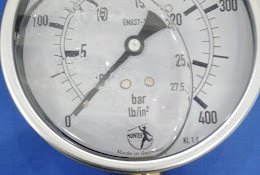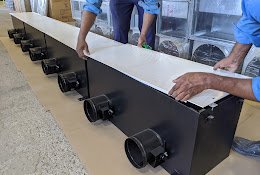Fashion is more than just clothing—it’s a powerful form of self-expression that communicates aspects of our personality, mood, and social identity. Every choice we make, from the colors we wear to the way we accessorize, influences how we are perceived by others. Understanding fashion psychology can help us make more intentional style choices, boost confidence, and enhance our overall presence.
The Psychology Behind Fashion Choices
The clothes we wear send nonverbal signals to the world, shaping first impressions and influencing social interactions. Psychologists argue that our attire affects both how others perceive us and how we feel about ourselves. Whether dressing for a job interview, a casual outing, or a formal event, our clothing choices subtly communicate messages about confidence, authority, creativity, or approachability.
Fashion psychology suggests that individuals dress according to their self-image and the emotions they want to evoke. Someone who prefers classic, tailored pieces might be seen as professional and detail-oriented, while someone who embraces bold patterns and avant-garde designs may be perceived as artistic and free-spirited. Understanding this connection can help individuals harness fashion as a tool for self-empowerment.
Dressing for Different Body Types
Understanding one’s body shape is essential for selecting clothing that enhances natural proportions. Dressing in a way that flatters your body type can create balance and highlight your best features.
For example, individuals with an hourglass figure may opt for fitted silhouettes that accentuate the waist, while those with a pear-shaped body might choose A-line skirts to balance proportions. Rectangular body types can benefit from clothing that adds definition to the waist, while inverted triangle shapes may prefer styles that soften the shoulders and add volume to the lower body.
Fashion psychology emphasizes that when individuals wear clothing that fits well and complements their body shape, they exude confidence. Feeling good in what you wear translates into a more positive self-image, affecting both mood and interactions with others.
The Influence of Seasonal Fashion Trends
Fashion trends shift with the seasons, influencing what colors, fabrics, and silhouettes dominate the industry. Seasonal changes not only reflect climatic conditions but also impact mood and psychological well-being.
Spring and summer trends typically feature bright colors, lightweight fabrics, and flowing silhouettes, promoting a sense of vibrancy and energy. In contrast, autumn and winter fashion often incorporates deeper hues, textured fabrics, and structured designs, evoking warmth and sophistication.
While following trends can be exciting, fashion psychology advises maintaining a personal style foundation. Incorporating trends selectively ensures that you stay true to your identity while enjoying seasonal updates.
The Power of Outfit Coordination
Well-coordinated outfits convey an image of thoughtfulness and attention to detail. A harmonious outfit combines colors, textures, and styles that complement each other without appearing overly matched.
Color coordination plays a crucial role in outfit planning. Understanding color analysis can help individuals determine which hues complement their skin tone, enhancing their overall appearance. Neutral tones create a classic and elegant look, while bold colors can make a strong statement. Repeating a specific shade in accessories, such as a handbag or shoes, can bring cohesiveness to an ensemble.
Outfit coordination also extends to layering and mixing textures. A well-layered look not only adds depth to an outfit but also enhances practicality, allowing seamless transitions between different settings and temperatures.
The Role of Accessories in Personal Expression
Accessories serve as the finishing touch that elevates an outfit. Whether it’s a statement necklace, a structured handbag, or a pair of bold sunglasses, accessories allow individuals to express their personality and style preferences.
Minimalist jewelry and neutral-toned accessories convey sophistication and elegance, while oversized earrings, colorful scarves, and embellished handbags add a playful and creative touch. Accessories also provide an opportunity to experiment with trends without committing to a drastic wardrobe change.
Beyond aesthetics, certain accessories hold cultural or sentimental value, such as heirloom jewelry, symbolic charms, or handcrafted pieces from travels. Wearing meaningful accessories can enhance the emotional connection to an outfit and create a personal narrative through fashion.
Understanding Color Psychology in Fashion
Colors have a profound psychological impact, influencing emotions, perceptions, and even decision-making. Fashion psychology explores how different colors affect mood and social interactions.
- Red: Symbolizes passion, confidence, and energy. Wearing red can make a bold impression and exude authority.
- Blue: Associated with calmness, reliability, and professionalism. It is a popular choice for workplace attire.
- Black: Conveys sophistication, power, and elegance. Often chosen for formal and classic ensembles.
- Yellow: Represents optimism and creativity. Ideal for adding a pop of energy to an outfit.
- Green: Reflects balance, growth, and nature. Frequently used in casual and sustainable fashion.
Learning about color analysis can help individuals select shades that enhance their natural features and align with their desired impression.
Budget-Friendly Styling: Looking Chic Without Overspending
Fashion psychology suggests that confidence in clothing is not determined by price tags but by how well an outfit aligns with personal style and self-expression. Affordable fashion can be just as stylish as high-end designer wear with the right approach.
Investing in versatile wardrobe staples, such as well-fitted blazers, classic denim, and neutral-toned footwear, ensures a timeless and adaptable wardrobe. Mixing high and low fashion—pairing designer accessories with budget-friendly basics—creates a polished and curated look.
Thrifting, clothing swaps, and sustainable fashion choices also offer budget-friendly alternatives without compromising style. With creativity and thoughtful shopping, anyone can build a wardrobe that reflects personality and sophistication without excessive spending.
Fashion Faux Pas to Avoid
Understanding fashion psychology helps individuals steer clear of common fashion mistakes that may unintentionally convey the wrong message.
Ill-fitting clothing, excessive trends, and mismatched color combinations can create a disorganized or unflattering appearance. Wearing inappropriate attire for specific occasions may also affect credibility and social perception.
Striking a balance between personal expression and situational appropriateness is key. Ensuring that an outfit aligns with the setting while remaining true to individual style prevents fashion missteps and enhances confidence.
Final Thoughts: Fashion as a Reflection of Identity
Fashion is an extension of personality, emotions, and self-perception. Every style choice, from the silhouette of a dress to the colors worn, plays a role in shaping one’s image and how they are perceived by others. Whether embracing trends, mastering outfit coordination, or experimenting with color psychology, understanding fashion’s psychological influence allows individuals to curate wardrobes that align with their identity.
By making conscious fashion choices, anyone can harness the power of clothing to enhance confidence, make meaningful impressions, and embrace the art of self-expression.









